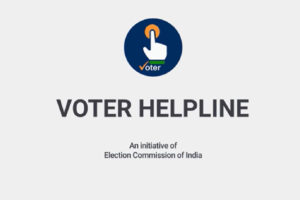COVID-19 an infectious and contagious disease is affecting individuals in different ways. It transmits through droplets produced when an infected person coughs or sneezes. It may also be transmitted if one touches any contaminated surface. The outbreak of the virus was first identified in China in early December 2019 (hence the suffix, COVID- “19”) and was declared a pandemic in March 2020 by the World Health Organization (WHO). With more than 6 species of the virus that have been found, it is still spreading rapidly and it has been almost 10 months since it was first found to have jumped to the human population. Coronavirus disease has infected approximately 35 million people out of which around 1.03 million people have died until now, all over the world. If we see the charts of India, 6.4 million people have been infected, with more than 100K deaths. While these figures are horrifying, the good news is that the recovery rate for COVID19 has been continuously growing and India currently stands at 83.7% recovery. The virus has not gone away completely and it does not even seem to disappear in the near future, but it is definitely waning.
The virus has challenged humanity through health and psyche. The lockdown of people, trade, businesses, and countries on a larger scale has affected the whole economic status and population dynamics of the world. Furthermore, with the accidental (as it is believed to be) arrival of this new novel virus, the biggest challenge in terms of operational adjustments for the healthcare sector came into the scene. Covid19 has been pushing the limits of the hospital care units since the very beginning. As the absolute cure for the disease has not been found yet, it has been suggested from the very start to stay indoors, wear masks, keep everything sanitized and maintain social distancing which has also now become a standard operating procedure (SOP) in our daily life. But, everyone is not following what is being suggested. People amidst lockdown have been seen coming out of their houses, not maintaining social distancing, standing in groups, and even protesting for various reasons.
What happens when a virus that is spread through human touch, sneezes, cough unrolls in the world’s second-most populous country which also has one of the highest population density? Let alone the diseased person, even the doctors, healthcare experts, and leaders are worried about the dangerous implications of this combination. It has been recently found in a study that around 60% of cases in India have been caused by Superspreaders who cause infections to a larger number of people with respect to others. Still, our healthcare workers did not fall prey to fear and stepped out and became the frontline warriors to fight the novel virus. As no-one was prepared for it healthcare too fell short on many things. The number of beds in hospitals, PPE kits for healthcare professionals, testing kits, medicines, and even the number of professionals was found to be not sufficient to tackle the situation. This led the government to make sure to get and pool enough resources and also ensure the utmost protection for our corona-warriors so that we can get through this crisis in the best possible way out. Even in this situation, many states whose governments are politically in the opposition standpoint did not get enough PPE kits from the center.
Given the current changes in healthcare delivery and the increased burden on healthcare facilities in meeting the challenges of the COVID-19 pandemic, standard operating procedures (SOPs) play a vital role to hinder and limit virus transmissions. In addition to the healthcare sector, the public also has to follow the given rules so that we can prevent ourselves from contracting the virus. The guidelines given under the SOPs have seen a drastic change with the unprecedented arrival of this virus and continue to see amendments in the near future as well. Besides ensuring that the healthcare institutions are safe, there has been the introduction of telemedicine, isolation centers, PPE (Personal Protective Equipment) kits, and many other new administrative measures in the hospitals.
Accompanying the healthcare sector, the pharma sector has faced the jolts too. The Indian pharma sector (third-largest in the world) is an important component of the global healthcare infrastructure and is instrumental in saving millions of lives every year. Some Indian pharma facilities had to be shut down as workers tested positive for COVID–19. Plants that are currently operational are producing less due to manpower crunch amid partially opened lockdown and social distancing measures. In short, production timelines have changed drastically. However, an increase in the sales of masks, sanitizers, and immunity booster drugs has been noticed.
Emergence of Healthcare Sector during Crisis
With the number of cases increasing every day, the tension in healthcare has been increasing rapidly. People have been seen tweeting about the unavailability of proper facilities. While on the other hand some have been seen praising the doctors and the medical facilities that they (the doctors) are providing at their ends. As the vaccine development still seems to be a far-fetched idea, plasma therapy is known to be doing an appreciable job as it has been seen in various serious cases.
As per the demand and the then need of the hour, the major changes were implemented on making COVID care hospitals exclusive. Subsequently, it was also needed to separate the staff and the COVID patients from the patients who had other diseases. To build such special requirements laden infrastructure amidst pandemic is something which seems impossible. According to a healthcare practitioner, a few thousand hospitals and ventilator beds are not enough for India’s 1.35 billion population. However, the Centre spent more than ₹300 crores only on hospital equipment. But this investment is too small compared to the large population that needed to be served in the midst of a global pandemic. Private hospitals invested in large volumes of essential medical supplies and restructured hospital infrastructure to create isolation and quarantine facilities. According to the Association of Indian Medical Device Industry, a private industry body, on a brighter side, the manufacturing capacity for ventilators alone has increased from 3,000 a month in February to 33,000 a month in May. Experts said that managing a pandemic will leave hospitals with some important lessons. There were intensified unanticipated and unplanned investments for COVID-19, but they will help in the long run.
During this global catastrophe, not only corona positive people suffered but also the people who had other diseases due to the extra pressure on the healthcare system and the fear among the people and health officials. In the earlier phase of the Corona pandemic, doctors for chronic diseases were not available and the patients who had their medications going on for a long time suffered due to the sudden disruption. Those who were infected with new diseases dithered to visit the clinics. Obviously, it was chaos in the beginning but with the time as there was a gradually increasing focus on segregating COVID and non-COVID hospitals, it was managed.
The virus came at the tipping point for the IT industry in terms of disruption to its functions. Having the collective data of medical background of every individual, implementing artificial intelligence, having phone applications that let you buy medicines online, producing low-cost ventilators, making OPD consultation rooms with video-conferencing solutions were some of the tasks that came in favor for the personnel in the IT domain during the pandemic. With the introduction of telemedicine, it would be easy to communicate with and diagnose the patients. This is already in practice and has resulted in making hospitals less crowded. It allows people to rest at home and visit hospitals only in the time of emergencies.
While healthcare people had their SOPs for treatments and themselves; other people had some guidelines to follow too. The majority of corporate sector individuals had to work from home, students had to attend their classes online, production businesses were on halt among others. These were among a number of changed modalities that are being implemented to prevent further spread of this disease. The gradually modified guidelines were implemented with every lockdown extension and as the world is under various stages of the unlock period, we are still seeing the implications of the guidelines. Healthcare sector people nonetheless are evolving their way of working to ensure that hospitals are not overburdened with cases.
Post-COVID Healthcare
There is no doubt that we will come out of this pandemic someday with a great experience and we will be better prepared for any such calamity happening in the future. Healthcare facilities will surely improve but there would be many changes that we will see in terms of their adaptation. The post-COVID world would be significantly different for us as well as the healthcare sector people. Telemedicine and digital health-tech already have shown their aptitude to make efficient healthcare delivery a possibility. They will soon be adopted on a large scale. Sanitization, masks, social distancing will be a part of our lives and we will continue to live with this for at least some time into the future.
We need to ask ourselves some questions. Do we really want to keep ourselves locked-in the majority of time? Do we want to wear masks every time, maintain social distancing, and not hug our friends when we meet them? No, we definitely do not want this. We can keep following this for some time given that the healthcare sector is adapting their SOPs for this changed scenario. We need to be prepared for adverse conditions and we should at least follow the guidelines that are being implemented by the experts in the healthcare sector.
The author is a student member of the Amity Centre of Happiness.





